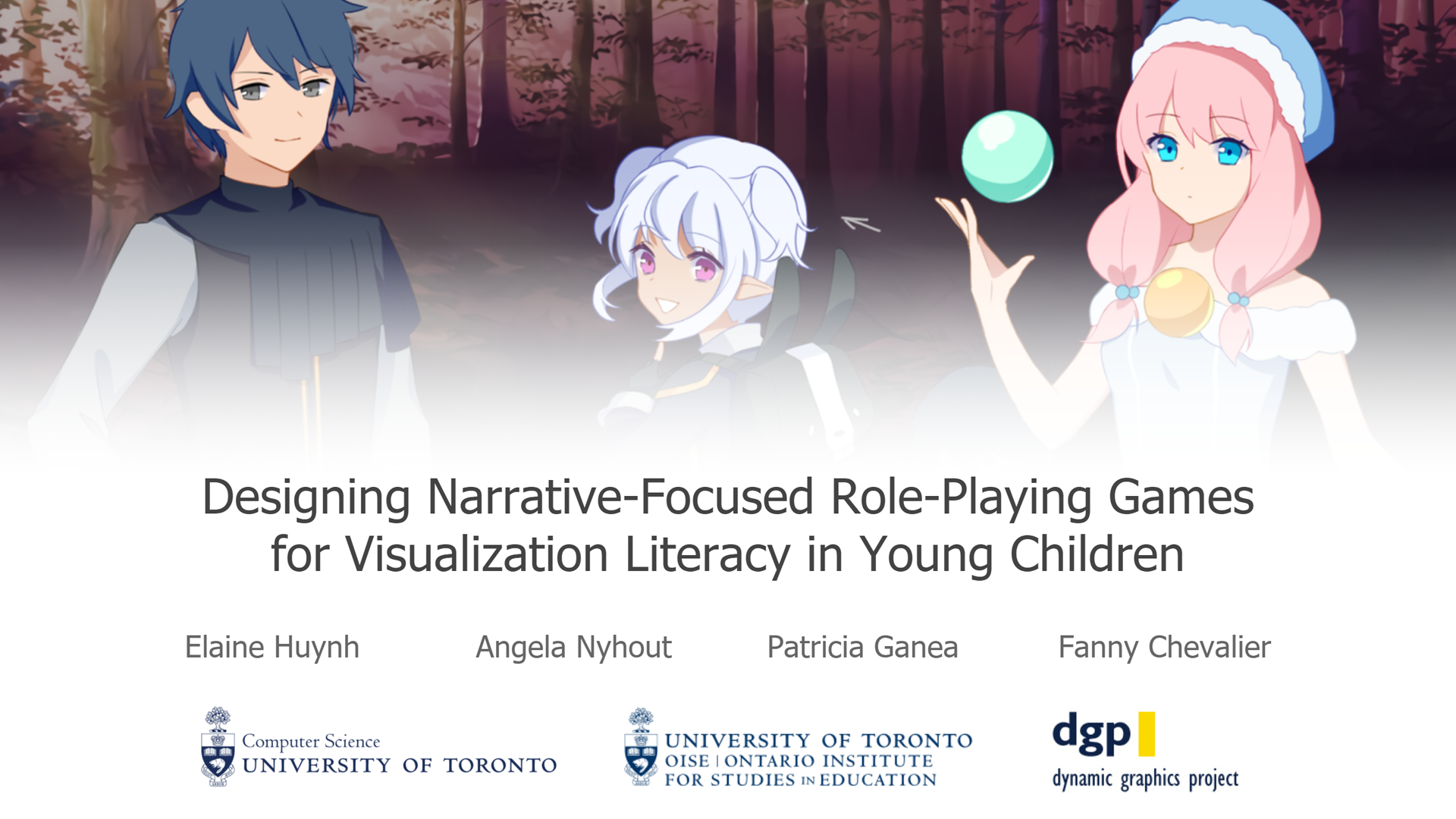Designing Narrative-Focused Role-Playing Games for Visualization Literacy in Young Children
Elaine Huynh, Angela Nyhout, Patricia Ganea, Fanny Chevalier
External link (DOI)
View presentation:2020-10-29T16:15:00ZGMT-0600Change your timezone on the schedule page
2020-10-29T16:15:00Z

Fast forward
Direct link to video on YouTube: https://youtu.be/VWl3KkLSmuQ
Keywords
Visualization Literacy, Educational technology, Gamification, Narrative
Abstract
Building on game design and education research, this paper introduces narrative-focused role-playing games as a way to promote visualization literacy in young children. Visualization literacy skills are vital in understanding the world around us and constructing meaningful visualizations, yet, how to better develop these skills at an early age remains largely overlooked and understudied. Only recently has the visualization community started to fill this gap, resulting in preliminary studies and development of educational tools for use in early education. We add to these efforts through the exploration of gamification to support learning, and identify an opportunity to apply role-playing game-based designs by leveraging the presence of narratives in data-related problems involving visualizations. We study the effects of including narrative elements on learning through a technology probe, grounded in a set of design considerations stemming from visualization, game design and education science. We create two versions of a game – one with narrative elements and one without – and evaluate our instances on 33 child participants between 11- to 13-years old using a between-subjects study design. Despite participants requiring double the amount of time to complete their game due to additional narrative elements, the inclusion of such elements were found to improve engagement without sacrificing learning; our results indicate no significant differences in development of graph-reading skills, but significant differences in engagement and overall enjoyment of the game. We report observations and qualitative feedback collected, and note areas for improvement and room for future work.